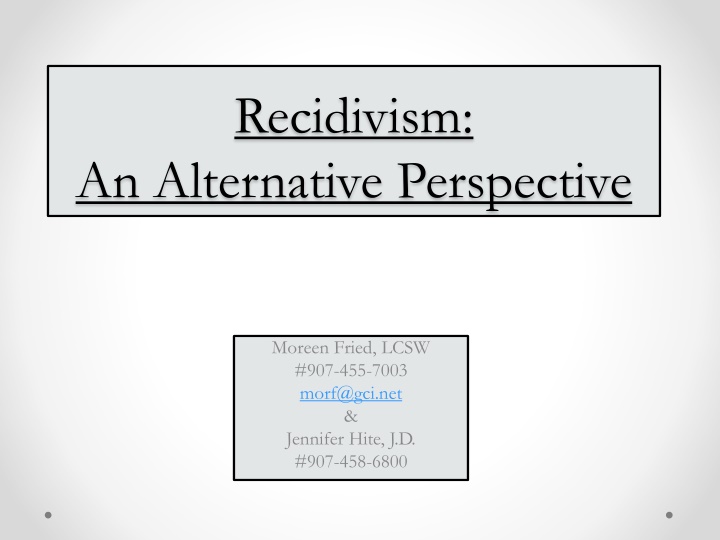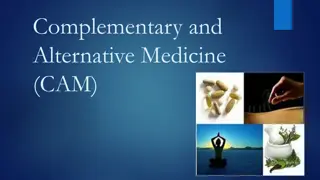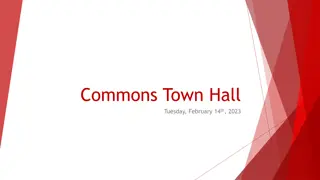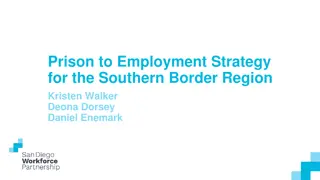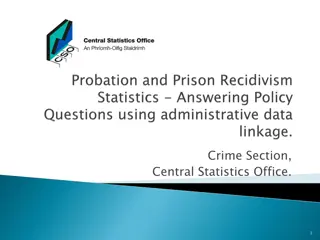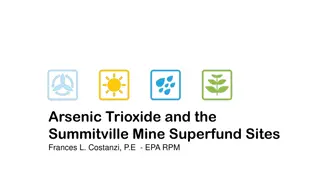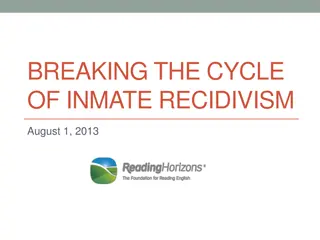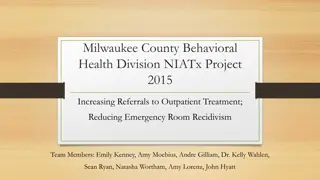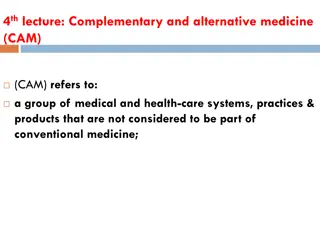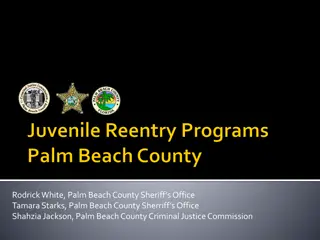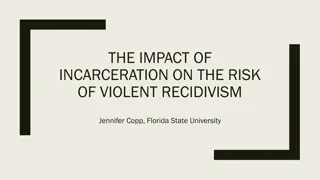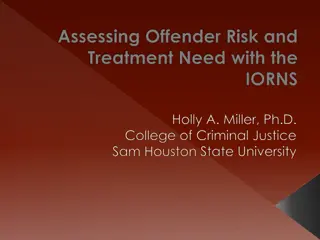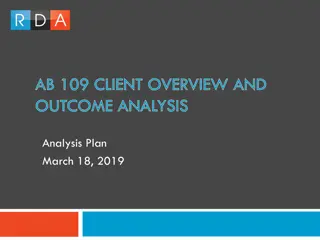Recidivism: An Alternative Perspective
Treatment/rehabilitation as a corrective experience for clients with traumatic life experiences. Addressing system dysfunction to reduce recidivism and improve community safety.
Download Presentation

Please find below an Image/Link to download the presentation.
The content on the website is provided AS IS for your information and personal use only. It may not be sold, licensed, or shared on other websites without obtaining consent from the author.If you encounter any issues during the download, it is possible that the publisher has removed the file from their server.
You are allowed to download the files provided on this website for personal or commercial use, subject to the condition that they are used lawfully. All files are the property of their respective owners.
The content on the website is provided AS IS for your information and personal use only. It may not be sold, licensed, or shared on other websites without obtaining consent from the author.
E N D
Presentation Transcript
Recidivism: An Alternative Perspective Moreen Fried, LCSW #907-455-7003 morf@gci.net & Jennifer Hite, J.D. #907-458-6800
OBJECTIVES 1. Be able to identify the ways in which we, the system, re-create or help repair the influence of a client s traumatic life experiences. 2. Be able to identify the ways in which each of us contributes to the system s/team s dysfunction. 3. Identify alternative ways of functioning within the system/team that reduces recidivism.
Our Premise Treatment/Rehabilitation is supposed to be a corrective experience. A client enters the system with a history of traumatic experiences in their first system-the family. Clients re-create relational dynamics similar to their original trauma-what is familiar. Relationships clients have with the team serves as an avenue for re-enactment of unresolved issues.
Our Premise cont.. Our relationship with each other offers clients the opportunity to have a different experience and thus, support efforts at repairing the traumatic influence of their past experiences. Breaking the cycle of recidivism increases community safety, reduces generational, individual & family trauma decreasing the number of new victims and offenders. Addressing client needs addresses societal needs.
When we (the system/team) act like the client s first system (the abusive family) we contribute to recidivism.
2015 Recidivism Reduction Plan In the last 20 years, Alaska s incarcerated population more than doubled, growing 28% in the last decade alone. pg. 1. From 1992-2012, prison growth in Alaska outpaced state population growth four-fold. pg. 1. Probationer failure to abide by conditions constitutes the second highest reason for felony admission. pg. 7. (www.correct.state.ak.us/..../HB266%20).
FRBKS Community Based SOATP (Statistics: 1998-2013 unless otherwise noted) 157 offenders participated in outpatient treatment. 2 discharged for treatment noncompliance = 1%. 3 recommended LCCC = 2% 4 arrested for domestic violence = 2.5% 7 arrested/charged with new sex crimes= 3.9% (since 1998) 14 arrested for substance use violations = 11% (released & completed SOATP/SATX)
RISK-NEED-RESPONSIVITY PRINCIPLE RISK Principle: Effective programs match the level of intervention intensity to the level of risk posed by the individual. NEED Principle: Effective programs target identified dynamic factors specific to the client s individualized needs. RESPONSIVITY Principle: Effective programs are responsive to: cognitive abilities; maturity; motivation; client world view; cultural background; attachment style; and process issues.
Legal System: P.O./DOC OCS Defense Attorney Parole Board Judge A.G./D.A. GAL/OPA Providers: SOATP SATX DVR Anger Management Mental Health Medical Institution: CRC Case Manager Prison P.O. Prison Tx. Providers CLIENT Safety Net Tribal Council Members Family VPSO Friends Employer Church Safety Plan Spiritual Leader (Circle size does not reflect importance)
Team Members Purpose-Mission Treatment Providers: Enhance quality of life; promote social justice/change; respect people s rights, dignity and diversity; clients as partners; self-empowerment. DHSS/OCS: Strengthen families; keep children safer; decrease disproportionality. Probation/Parole: Enhance community safety via effective supervision and successful offender reintegration.
Team Members Purpose-Mission cont. Attorney General: Provide counsel to state agencies and represent public interest. District Attorney: Prosecute violations of state criminal law with goal of having safe and healthy communities. Defense Attorney: Provide constitutionally mandated legal representation.
Whose responsibility is it when team members goals & client needs conflict? ____________________________ Whose responsibility is it when team member s goals conflict with each other?
Yours, Mine and Ours- Here s How Management of opposing interests. & Compromise and strategic advocacy.
REDUCE RECIDIVISM Build Alliances Strategic Advocacy Compromise
